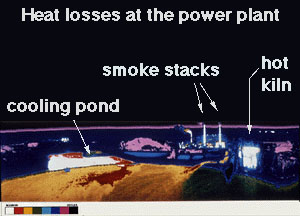ExploraTour: A Peek into the Lives of the Stars

Now comes the exciting part...
When we apply this to stars, we find out a lot of interesting things about them. By observing the color of a star, we can figure out its temperature. If we know how far away the star is, we can calculate how much total light is given off. A star can appear brighter just because it is closer. From the color and intensity of the light, and the black body curves shown on the previous page, we can tell how big the star must be for the light from all the surface patches to add up to the total light we see... and all without leaving the Earth. This is a powerful tool for investigating the stars!











